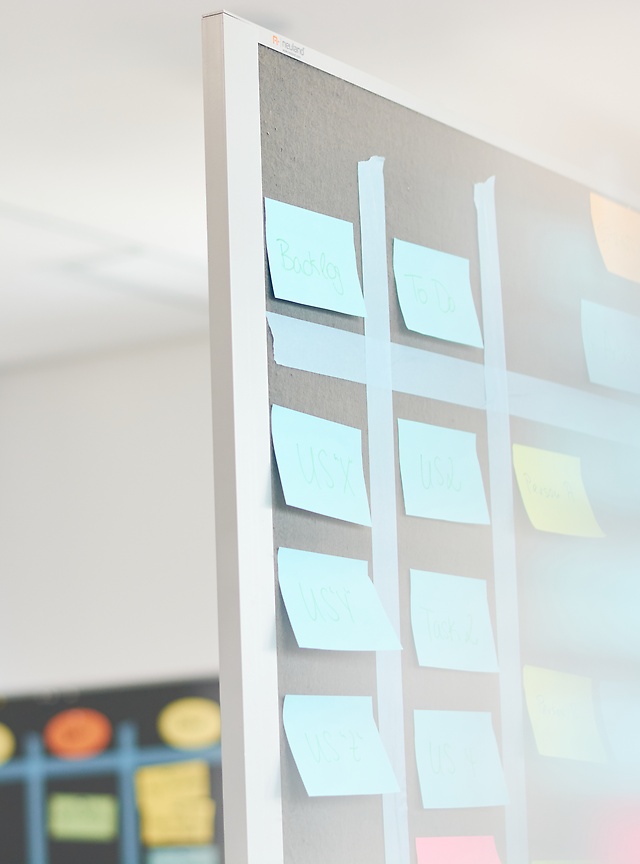24. September 2024 By Yelle Lieder
Sustainable Innovation - Creating something new sustainably
When we develop new products, services, processes or business models, we always do so with a grand vision. Hardly any innovator thinks at the beginning of the journey that the potential of his or her solution is very limited and that he or she can only achieve a little with it. They think big and far into the future, and that's a good thing. This makes it all the more important to take a holistic view of how these innovations will influence the world we will live in in the future.
This is not just about innovations that explicitly pursue the goal of sustainability. In other words, not just green tech and sustainability projects. Rather, it is about all types of innovations that we create in the future - regardless of their primary purpose. After all, everything we develop should last as long as possible and be sustainable so that it is compatible with the preservation of a future worth living.
According to a survey by the German Environmental Foundation, most companies see challenges in the practical implementation of sustainable digital innovations. Contrary to the persistent narrative that companies simply do not consider the topic important, the survey data shows that internal prioritisation is cited as an obstacle in less than half of cases. This blog post therefore provides some food for thought on how digital innovations can be implemented in practice.
Taking sustainability goals into account
Sustainable innovations take into account the existing sustainability goals of the company in which they are implemented. The pressure from investors, customers and legislation to act responsibly is increasing. We must ensure that all new innovations also contribute to our company's sustainability goals. In future, there must be no more initiatives that do not contribute to or even harm the achievement of our goals.
Taking a holistic view of the life cycle
Sustainable innovations consider the entire life cycle. Digital innovations in particular must not only focus on the utilisation phase. The development process must also be made more sustainable. The end of the digital product life cycle is also often underestimated. For example, when the e-bike provider Vanmoof went bankrupt last year, it was unclear whether the bikes could still be completed without the associated app. If Vanmoof had not been rescued, many bikes would have become unusable. Precautions need to be taken in advance. So before implementing innovations, we want to check where measures need to be taken to avoid negative environmental impacts in the individual life cycle phases.
Considering non-user needs
Sustainable innovations also take into account the needs of non-users. User centricity is no longer a trend, but the norm in well-organised teams. As important as it is to place users at the centre of the innovation process, other stakeholders are often forgotten in the process. One prominent example is Google Maps navigation, which gets drivers to their destination efficiently while residents and the environment suffer from incomprehensible changes to route guidance. If the algorithm suddenly decides to route thousands of cars through a play street every day, this may be good for the user metric of the shortest route, but it is unfortunately too short-sighted. We therefore want to consider the impact on the environment when developing solutions and not just focus on the user at all costs.

Another example of why user centricity does not always lead to the goal. Source: https://www.linkedin.com/posts/clemenslutsch_ux-sustainability-hcd-activity-7181558263019167746-cyln
Promoting diversity
Sustainable innovations promote diversity in the innovation process. Only when as many different people as possible are involved in the innovation process can really good solutions be created. One example is the development of car seatbelt systems, which is focussed on men and in which women are injured disproportionately often. Such avoidable mistakes can be prevented through diversity. Only a wide range of experiences, backgrounds and predispositions in the innovation process can ensure that solutions fulfil the needs of as many stakeholder groups as possible.
Anticipate rebound effects
Sustainable innovations anticipate rebound effects. If solutions are more efficient, more cost-effective and therefore more attractive to use, it can be assumed that they will be used more frequently. The resulting rebound effect means that increases in efficiency in particular often lead to less sustainability. Examples range from more efficient cars that are driven more to more efficient network technologies that make data transmission cheaper and therefore ultimately consume even more resources. We want to anticipate such effects in the innovation process and counteract them. Efficiency should not be confused with sustainability. Efficiency increases are primarily possible where utilisation has reached a natural saturation point. For example, if our time recording system runs ten times faster next week, we will not record ten times more hours.
Assessing impacts
Sustainable innovations assess the impact on the Sustainable Development Goals (SDGs). When developing new innovations, we should analyse their impact on the SDGs. This can be both positive and negative. For example, if I develop a solution that uses AI to improve the learning experience of students and thus contributes to SDG 4 (Quality Education), but the training and operation consume a lot of electricity and thus counteract SDG 13 (Climate Action), it is important to identify and evaluate this trade-off. Without analysing the potential positive and negative impacts, we will never become aware of such trade-offs.

Sustainable Development Goals of the United Nations. Source: https://de.wikipedia.org/wiki/Ziele_f%C3%BCr_nachhaltige_Entwicklung#/media/Datei:Sustainable_Development_Goals_de.svg
Facilitating sustainability
Sustainable innovations make sustainability easier for users. By asking about sustainability preferences and making the sustainability implications of the solution transparent, we can make an active contribution. We also have the opportunity to make it easier for users to act sustainably. The sustainable alternative should always be the easiest to achieve. For example, if we offer an online food delivery service, a direct filter for vegetarian dishes could be prominently placed to make it easier for users to decide in favour of more sustainable action. The use case and context of use of the innovation therefore do not have to be related to sustainability and can still take sustainability into account.
Continuous improvement
Sustainable innovation is a continuous process that is geared towards long-term value creation. Sustainability must always be viewed as an ongoing requirement, even when solutions are being further developed. A central aspect is the regular evaluation and adjustment of the ecological and social impact of innovations. It is therefore important to react flexibly to new scientific findings and technological developments. This may mean adapting existing products or replacing them with new, more sustainable alternatives. Finally, progress and challenges in the area of sustainability should be communicated transparently. An open dialogue with stakeholders strengthens trust and promotes cooperation to achieve common sustainability goals. By continuously improving their approaches, companies can ensure that their innovations remain sustainable and fit for the future.
Utilising expert knowledge
Sustainable innovations utilise expert knowledge. Not everyone is an expert in sustainable innovation and there are often conflicting goals and rebound effects that are not visible at first glance. It is not for nothing that there are experts in this field. You should therefore utilise expert knowledge and not believe that you can do everything yourself. Using experienced experts can ensure that sustainability measures have a high ROI and minimise risks such as greenwashing.
Creating something new sustainably
When developing our innovation and digitalisation strategies, we must always take existing sustainability goals into account. We must ensure that we not only consider the needs of users, but also those of non-users and the environment. Let's think about potential positive and negative impacts on the Sustainable Development Goals (SDGs) and work with a diverse team to develop and validate prototypes. As part of change management when introducing innovations, we must establish continuous monitoring of sustainability implications and be prepared to counteract negative trends. We need to support our users in achieving their personal sustainability goals by making sustainable alternatives easily accessible.
We are all responsible for the solutions we bring into the world. This action guide is intended to help us fulfil this responsibility and shape a sustainable future together.
You can find out more about exciting topics from the world of adesso in our previous blog posts.
Also interesting:

